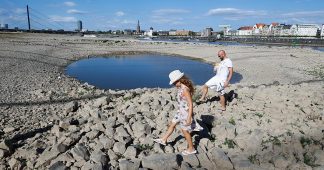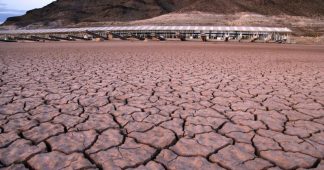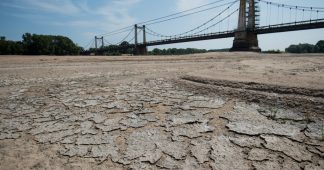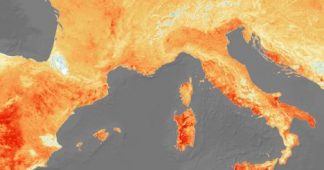The World Weather Attribution project has released a study that confirms that what has been happening in Siberia can only be explained by human caused climate change. The Siberian Heatwave is not natural.
First, before we dive in, let’s briefly verify that this is a credible source and not simply a crank website.
Who is the World Weather Attribution Project?
I’ve written up the details of who World Weather Attribution is before.
Briefly, it is an international effort to analyze and communicate the possible influence of climate change on extreme weather events, such as storms, extreme rainfall, heat waves, cold spells, and droughts.
It is basically a partnership of …
- Environmental Change Institute, University of Oxford (ECI)
- Royal Netherlands Meteorological Institute (KNMI)
- Laboratoire des Sciences du Climat et de l’Environment (LSCE)
- University of Princeton
- National Center for Atmospheric Research (NCAR)
- Red Cross Red Crescent Climate Centre (The Climate Centre).
In other words …
- Is it reliable? – Tick
- Do their articles use technobabble terms that befuddle and confuse those not familiar with them? – Nope
- Who is the target audience? – People who are interested in the topic?
- Is it way too simplistic? – No, is it precise and evidence-based.
What might perhaps help is to understand exactly who has authored this latest study and what their credentials are. These are the authors …
- Met Office UK: Andrew Ciavarella, Daniel Cotterill, Peter Stott
- KNMI: Sarah Kew, Sjoukje Philip, Geert Jan van Oldenborgh
- DWD: Amalie Skålevåg, Philip Lorenz
- Météo France: Yoann Robin
- University of Oxford: Friederike Otto
- ETH Zurich: Mathias Hauser, Sonia I. Seneviratne, Flavio Lehner
- IGE/UGA, P.P.Shirshov Institute of Oceanology: Olga Zolina
OK, now that we have established that this is indeed a credible source and that the authors are indeed subject matter experts, let’s dive in.
Study: Prolonged Siberian heat of 2020
Published on Wednesday (July 15, 2020), this report examines what has been going on in Siberia in 2020.
The report investigates the role of human-induced climate change in the likelihood and intensity of both of these events:
- the large region over Siberia which experienced prolonged higher than normal temperatures over the first 6 months of 2020, and
- the weather station in the town of Verkhoyansk that measured a maximum temperature of 38 degrees Celsius on 20 June.
The bigger picture is of course not just about these two specific definitions. Impacts linked directly or in part to the extreme heat have been widespread such as persistent wildfires (about 7,900 square miles of Siberian territory had burned so far this year), health impacts on the population, melting of permafrost (A fuel tank near the isolated Arctic mining city of Norilsk burst in late May after sinking into permafrost that had stood firm for years but gave way during a warm spring).
The key question being asked is this. Is it simply all part of a natural cycle or is this a consequence of human induced climate change.
What exactly did they do?
It is basically a statistical analysis of temperature extremes. From this they can calculate an attribution analysis for the two event definitions that they selected.
What did they find?
These are the six main findings …
- The results showed with high confidence that the January to June 2020 prolonged heat was made at least 600 times more likely as a result of human-induced climate change.
- We note that even with climate change, the prolonged heat was a very rare event expected to occur less than once every 130 years.
- The results for the town of Verkhoyansk show that the record breaking June temperatures were also made much more likely (upwards of many thousands of times), though there is less confidence in this result.
- Combining the values from the models and weather observations shows that for the large region the same six-months hot spell would have been at least 2 degrees Celsius cooler had it occurred in 1900 instead of 2020. For Verkhoyansk, maximum June temperatures increased due to climate change by at least 1 degree compared to 1900.
- By 2050 the Siberian region could expect to have temperatures increase by at least 2.5 degrees compared to 1900, but this increase could be as high as 7 degrees.
- This would correspond to an additional warming of at least 0.5 degrees and possibly up to around 5 degrees by 2050 compared to today.

Is this credible?
Siberia can normally expect to have a series of low and high pressure systems moving over the region allowing warmer and cooler air to affect the weather. It may indeed be tempting to consider the idea that 2020 could simply be a time when warmer air has naturally induced the extremes.
However, crunching the statistical numbers leads them to be very confident that the large-scale prolonged event would have been essentially impossible without climate change.
Their confidence for the daily record at the individual weather station is appropriately much lower. This is because better data is available and so increased robustness is achieved from averaging climate models over large regions.
Picking just one extreme event on just one day would be a dubious way for reaching a scientific conclusion, but it is still useful to highlight because it is an effective way to communicate the extreme of what is happening.
The bigger picture, the average temperatures over 6 months for a large region, greatly increases the confidence in the interpretation of the data.
The consequences of human induced Climate Change is here, and this is only the beginning.
Translation: Doing nothing is really not going to be an appropriate option.
Study Author Comments
Lead author of the research and Senior Detection and Attribution scientist at the Met Office Andrew Ciavarella:
“The findings of this rapid research – that climate change increased the chances of the prolonged heat in Siberia by at least 600 times – are truly staggering. This research is further evidence of the extreme temperatures we can expect to see more frequently around the world in a warming global climate. Importantly, an increasing frequency of these extreme heat events can be moderated by reducing greenhouse gas emissions.”
Prof. Olga Zolina, P.P.Shirshov Institute of Oceanology, RAS, Moscow, and CNRS Institut des Géosciences de l’Environnement, Grenoble, lead author IPCC AR6:
“This study shows that not only was the magnitude of the temperature extremely rare but also the weather patterns that caused it. We are continuing to study how the wildfires that have burned over thousands of hectares might also affect the climate as the flames pump smoke and ash into the atmosphere.”
Dr. Friederike Otto, acting director of Oxford’s Environmental Change Institute, and co-lead of the World Weather Attribution initiative:
“This study shows again just how much of a game changer climate change is with respect to heatwaves. Given that heatwaves are by far the deadliest extreme weather events in most parts of the world they must be taken very seriously. As emissions continue to rise we need to think about building resilience to extreme heat all over the world, even in Arctic communities – which would have seemed nonsensical not very long ago.”
Prof. Sonia Seneviratne from the Department of Environmental Systems Science at ETH Zurich (D-USYS), a lead author on several IPCC reports:
“These results show that we are starting to experience extreme events which would have almost no chance of happening without human footprint on the climate system. We have little time left to stabilize global warming at levels at which climate change would remain within the bounds of the Paris Agreement. For a stabilization at 1.5°C of global warming, which would still imply more risks of such extreme heat events, we need to reduce our CO2 emissions by at least half until 2030.”
Unprecedented #wildfire activity in the #Arctic Circle in June 2019, with notable widespread fires in Sakha Republic, Russia for much of the last 3 weeks, as estimated with #Copernicus Atmosphere Monitoring Service GFAS data based on MODIS ?️obs https://t.co/Q4YBntiQxU pic.twitter.com/6BYHyrpxx3
— Mark Parrington (@m_parrington) July 2, 2019
Monthly temperature anomalies over Siberia for the first half of 2020. While the 'warmth' has moved around a bit, the persistence is just so striking…
[Data from JRA-55 reanalysis] pic.twitter.com/GfX2egeznE
— Zack Labe (@ZLabe) July 8, 2020
Climate change made Siberian heatwave 600 times more likely – Human fingerprint on record temperatures ‘has rarely, if ever, been clearer’, says report https://t.co/y3EZQ47S5s
— Svein Tveitdal (@tveitdal) July 16, 2020
Record-breaking Siberian heatwave 'almost impossible' without human-caused climate change https://t.co/tMANBBAKjL
— BBC News (World) (@BBCWorld) July 15, 2020
This year’s record breaking Siberian heatwave is a direct result of human induced global heating.
https://t.co/ESnHCEU8jW pic.twitter.com/ohSFE9TepX
— Dave Throup (@DaveThroup) July 15, 2020
Published ata www.skeptical-science.com











